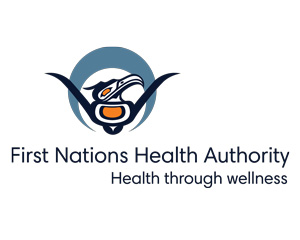First Nations people in British Columbia has been greatly reduced by the dual impacts of the COVID-19 pandemic and the toxic drug public health emergency. Between 2015 and 2021, life expectancy for First Nations people decreased by 7.1 years.The most significant impact on First Nations people in BC was observed during the dual public health emergencies, between 2019 and 2021, during which life expectancy dropped by 5.8 years. Toxic drug poisonings had the greatest impact on life expectancy, followed by COVID-19, compared to any other cause of death during those two years. This is disproportionate by comparison to other residents of BC, who experienced a decrease of 1.1 years in life expectancy during the same time frame. First Nations people also had a lower baseline life expectancy prior to the dual public health emergencies, which only further exacerbated the disparity.
The toxic drug emergency had the greatest impact on life expectancy and resulted in more potential years of life lost, especially among First Nations men. This is because the toxic drug emergency has resulted in a greater number of deaths and a lower age at the time of death, which will have a more profound effect on life expectancy.
According to Vital Statistics data analyzed in collaboration between the Office of the Provincial Health Officer of BC and the FNHA, a First Nations girl born in 2019 was expected, on average, to live to the age of 75.2 years. A First Nations girl born in 2021, however, could be expected to live to only 70.3 years. This marks a five-year drop in life expectancy between First Nations girls born in 2021 compared with those born two years prior, and an increasing gap in life expectancy between First Nations and other residents. A similar, but slightly higher, reduction in life expectancy is seen in First Nations boys born in 2021.
This drop in life expectancy for First Nations people in BC is both saddening and unacceptable. The harms of the dual public health emergencies have significantly impacted the long-term health and wellness of First Nations people in BC. We will apply this lens to inform all of our work moving forward.
The FNHA is calling on our health system partners to share in acting together to address the detrimental effects of these dual emergencies while working towards parity in life expectancy for First Nations people and the general population.
The FNHA uses the tools and lessons learned from COVID-19 to inform future responses to outbreaks or other communicable diseases. As well, we are providing a range of options and services to support people who use substances within a harm reduction framework that intends to address the impact of the toxic drug emergency.
As part of that response, the FNHA is operating in a Level 2 emergency response structure to increase the provision of culturally safe, trauma-informed and responsive supports for people who use substances. This is to ensure that our efforts are as robust in confronting the toxic drug emergency as it was during the pandemic.
This work was supported by, and done in collaboration with the Office of the Provincial Health Officer of BC.
To learn more about the FNHA's supports and services, please visit
fnha.ca/harmreduction.

